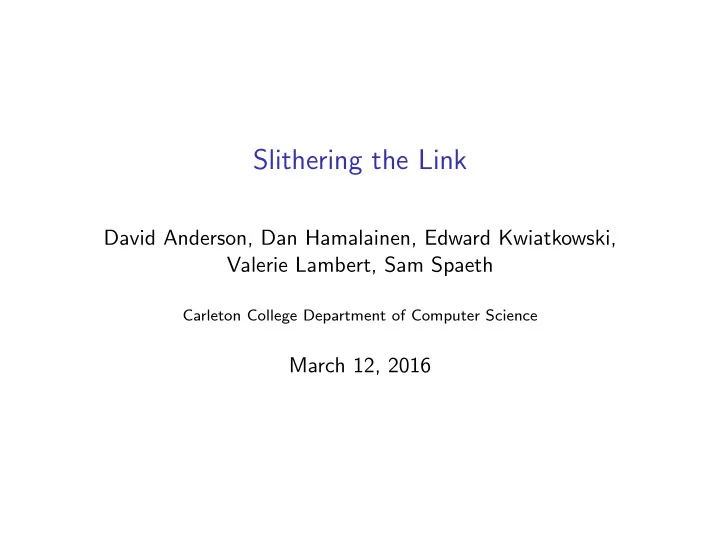

Checking for Multiple Solutions For every guess we made to get to the solution: ◮ Go back to the state of the grid before the guess was made, and solve the corresponding grid with the opposite guess at that same spot: ◮ If the opposite guess eventually leads to a contradiction, we know that the original guess has to be true (given all previous guesses). Continue to check other guesses. ◮ If the opposite guess eventually leads to one or more solutions, then we know that this grid has more than one solution. If the opposite of every guess we had to make leads to a contradiction, then we know that the original solution we found is the only one.
Checking for Multiple Solutions For every guess we made to get to the solution: ◮ Go back to the state of the grid before the guess was made, and solve the corresponding grid with the opposite guess at that same spot: ◮ If the opposite guess eventually leads to a contradiction, we know that the original guess has to be true (given all previous guesses). Continue to check other guesses. ◮ If the opposite guess eventually leads to one or more solutions, then we know that this grid has more than one solution. If the opposite of every guess we had to make leads to a contradiction, then we know that the original solution we found is the only one.
Checking for Multiple Solutions
Checking for Multiple Solutions
Checking for Multiple Solutions
Checking for Multiple Solutions
Time Complexity Important details:
Time Complexity Important details: ◮ For each depth, O ( mn ) new guesses, each taking O ( mn ) time to instantiate
Time Complexity Important details: ◮ For each depth, O ( mn ) new guesses, each taking O ( mn ) time to instantiate ◮ Guessing at the max depth is by far the most important factor in runtime
Time Complexity Important details: ◮ For each depth, O ( mn ) new guesses, each taking O ( mn ) time to instantiate ◮ Guessing at the max depth is by far the most important factor in runtime ◮ We can maximize this by never filling anything in at lower depths
Time Complexity Overall runtime O (( mn ) d ) with d bounded above by O ( mn ) Table 2: Empty grid completion time Size Max Depth Time (sec) 3x3 0 0.001111 3x3 1 0.033743 3x3 2 1.19998 3x3 3 57.2004 3x3 4 2587.52
Empirical Results: Typical Puzzles Table 3: Solve Times Size Max Depth Solve Time 10x10 1 0.048542 seconds 10x10 1 0.385348 seconds 10x10 2 1.77571 seconds 10x10 2 3.23716 seconds 10x10 3 150.824 seconds* 30x25 1 1.95466 seconds 30x25 1 2.38471 seconds 30x25 1 4.4892 seconds 40x30 1 1.97524 seconds 40x30 3 66.268 seconds* *These puzzles were determined to have multiple solutions Puzzles taken from nikoli . com , kakuro − online . com , and puzzle − loop . com .
Recommend
More recommend